The Ultimate Guide to Lawn Mowing in Strawberry Hill

Maintaining a beautiful lawn in Strawberry Hill can be both rewarding and challenging. Whether you're a homeowner looking to enhance your curb appeal or a business owner aiming to create an inviting outdoor space, understanding the intricacies of lawn mowing is essential.
Strawberry Hill offers a unique climate and soil composition that affects how your grass grows. Selecting the right type of grass, mowing technique, and maintenance schedule can make a significant difference in the health and appearance of your lawn.
In this comprehensive guide, we'll explore everything you need to know about lawn mowing in Strawberry Hill, including tips, best practices, and local considerations to keep your grass green and lush year-round.
Understanding the Climate of Strawberry Hill
Strawberry Hill experiences a temperate climate with distinct seasons, which plays a crucial role in lawn care. The region typically has mild winters and warm summers, creating optimal conditions for various types of grass to thrive.
However, it's important to consider the specific weather patterns, such as rainfall and temperature fluctuations, when planning your lawn mowing schedule. Understanding these factors will help you adjust your maintenance routine to accommodate the changing seasons.
Additionally, the local microclimates within Strawberry Hill can influence grass growth. Areas with more shade, for example, may require different grass species and mowing heights compared to sunnier spots.
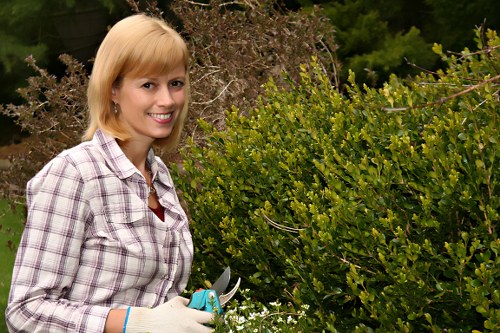
Selecting the Right Grass for Your Lawn
Choosing the appropriate grass type is foundational to a healthy lawn. In Strawberry Hill, cool-season grasses like Kentucky bluegrass, perennial ryegrass, and tall fescue are popular choices due to their adaptability to the local climate.
Kentucky Bluegrass offers a rich green color and fine texture, making it a favorite for residential lawns. It's known for its ability to recover from wear, making it ideal for high-traffic areas.
Perennial Ryegrass establishes quickly and provides excellent coverage, making it suitable for overseeding and repairing bare spots. Its rapid germination helps maintain a lush appearance throughout the growing season.

Tall Fescue
Tall Fescue is drought-tolerant and has a deep root system, which helps it withstand periods of dry weather. Its coarse texture makes it a durable choice for lawns that experience heavy use.
When selecting grass, consider factors such as sun exposure, soil type, and the level of maintenance you're willing to commit to. Consulting with a local lawn care professional can provide personalized recommendations based on your specific needs.
Proper grass selection sets the foundation for a healthy and attractive lawn, reducing the need for excessive watering, fertilizing, and mowing.

Essential Lawn Mowing Techniques
Mastering the art of lawn mowing involves more than just pushing a mower across your yard. Implementing the right techniques ensures that your grass remains healthy and resilient.
One critical aspect is mowing height. Different grass types require varying heights to thrive. For instance, Kentucky bluegrass prefers a mowing height of 2.5 to 3 inches, while fescue can do well at slightly taller heights.
Regular mowing encourages grass to grow thicker and prevents weeds from taking over. However, it's important not to cut more than one-third of the grass blade's length at a time to avoid stressing the plant.
Proper Mowing Schedule
Establishing a consistent mowing schedule is essential for maintaining lawn health. During the peak growing season in Strawberry Hill, typically spring and summer, mowing once a week is recommended.
In slower growth periods, such as late fall and early spring, reducing mowing frequency helps the grass adjust to changes in growth rates. Monitoring your lawn's growth and adjusting your schedule accordingly ensures optimal results.
Additionally, varying your mowing pattern each time you mow can prevent soil compaction and promote even growth.
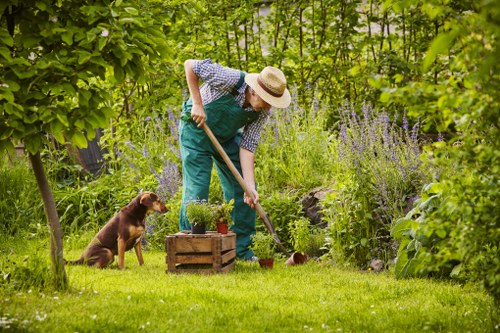
Equipment Selection and Maintenance
Choosing the right lawn mower is crucial for efficient and effective mowing. There are several types of mowers to consider, each with its advantages and suitability for different lawn sizes and terrains.
- Push Mowers: Ideal for small to medium-sized lawns, push mowers are lightweight and easy to maneuver.
- Self-Propelled Mowers: These mowers reduce the effort required to push, making them suitable for larger lawns with uneven terrain.
- Riding Mowers: Best for extensive lawns, riding mowers cover large areas quickly and come equipped with additional features for enhanced performance.
Regular maintenance of your lawn mower extends its lifespan and ensures consistent performance. This includes sharpening blades, cleaning the deck, checking oil levels, and replacing worn parts as needed.
Proper maintenance not only keeps your mower in top condition but also contributes to safer and more efficient mowing sessions.
Eco-Friendly Mower Options
For environmentally conscious homeowners, there are eco-friendly mower options available. Electric mowers produce zero emissions and are quieter than their gasoline-powered counterparts, making them a sustainable choice for maintaining your lawn.
Battery-powered mowers offer the convenience of cordless operation, while manual reel mowers provide a truly green mowing solution with no fuel or electricity required.
Choosing an eco-friendly mower aligns with sustainable practices and reduces your carbon footprint while keeping your lawn pristine.

Local Lawn Care Services in Strawberry Hill
For those who prefer professional assistance, Strawberry Hill boasts a variety of lawn care services tailored to meet diverse needs. These services range from regular mowing and trimming to comprehensive lawn maintenance packages.
Professional lawn care providers understand the local climate and soil conditions, allowing them to deliver customized solutions that enhance lawn health and aesthetics.
Hiring a local service ensures timely care, especially during peak growing seasons, and alleviates the burden of maintaining your lawn amidst a busy schedule.
Benefits of Professional Lawn Care
Enlisting professional lawn care services offers numerous advantages, including:
- Expert Knowledge: Professionals have the expertise to identify and address lawn issues effectively.
- Time Savings: Outsourcing lawn care frees up your time for other important tasks.
- Consistent Results: Regular maintenance by experts ensures a consistently well-manicured lawn.
Investing in professional lawn care can lead to long-term benefits, including increased property value and enhanced curb appeal.
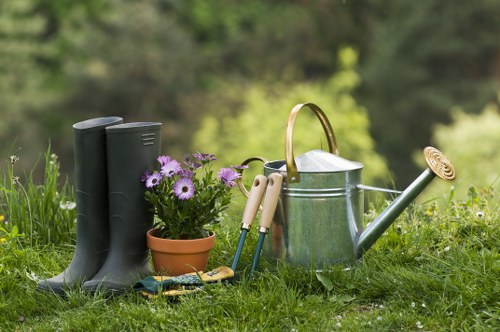
Seasonal Lawn Care Tips
Adapting your lawn care routine to the changing seasons is essential for maintaining a healthy lawn year-round in Strawberry Hill.
Spring: Focus on aeration, fertilization, and reseeding to repair winter damage and promote new growth.
Summer: Maintain proper mowing height, ensure adequate watering, and control weeds to withstand the heat and dryness.
Fall and Winter Care
In the fall, prepare your lawn for the colder months by continuing to fertilize and aerate. This helps build strong root systems that support grass health during winter.
During winter, minimize foot traffic on your lawn to prevent damage and reduce mowing activities as grass growth slows.
Providing proper seasonal care ensures that your lawn remains resilient and vibrant throughout the year.
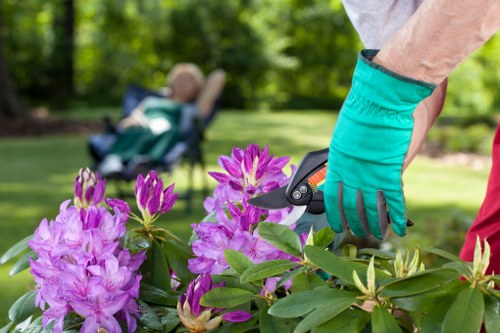
Local Regulations and Guidelines
Understanding local regulations in Strawberry Hill is important for compliant and respectful lawn care practices. Some communities may have specific guidelines regarding mowing times, noise restrictions, and water usage.
Adhering to these regulations not only avoids potential fines but also fosters a harmonious relationship with neighbors and the community.
Water Conservation Practices
Water conservation is a critical aspect of lawn care, especially during dry seasons. Implementing practices such as proper irrigation scheduling, using mulch, and selecting drought-tolerant grass varieties can significantly reduce water usage.
Employing efficient irrigation systems, like drip or soaker hoses, ensures that water is directed to the root zones where it's most needed, minimizing waste.
These practices contribute to a sustainable and environmentally friendly approach to maintaining your lawn.

Enhancing Your Lawn with Additional Features
Beyond mowing, integrating features like edging, aeration, and fertilization can elevate the health and appearance of your lawn in Strawberry Hill.
Edging defines the borders of your lawn, preventing grass from encroaching on pathways and flower beds. It also gives your landscape a neat and structured look.
Aeration involves perforating the soil to allow air, water, and nutrients to penetrate the grass roots, promoting stronger and healthier growth.
Fertilization and Weed Control
Regular fertilization provides essential nutrients that support grass health and vigor. Selecting the right fertilizer based on your grass type and soil condition ensures optimal results.
Effective weed control is also vital for maintaining a pristine lawn. Implementing pre-emergent herbicides and manual weeding can manage unwanted vegetation without harming your grass.
These additional features contribute to a comprehensive lawn care regimen that fosters a lush and resilient landscape.
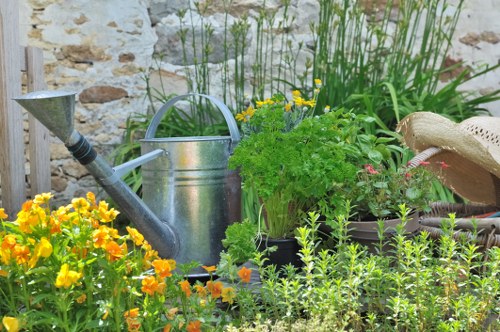
Top 15 Nearby Areas to Strawberry Hill for Lawn Mowing Services
Strawberry Hill is surrounded by several charming neighborhoods and communities that require expert lawn mowing services. Here are the top 15 nearby areas where residents can benefit from professional lawn care:
- Bear Creek: Just 2 miles north, Bear Creek offers extensive green spaces perfect for family lawns.
- Meadowbrook: Located 3 miles southwest, Meadowbrook is known for its spacious backyards and community parks.
- Maple Ridge: 4 miles east of Strawberry Hill, Maple Ridge has a mix of residential and commercial properties needing regular maintenance.
- Willow Grove: Situated 5 miles southeast, Willow Grove features hilly terrains that require specialized mowing equipment.
- Oakwood: 6 miles west, Oakwood boasts mature trees and lush lawns ideal for expert lawn care services.
- Pine Valley: 7 miles northeast, Pine Valley has a high demand for sustainable and eco-friendly lawn mowing solutions.
- Sunnydale: 8 miles south, Sunnydale's sunny climate supports diverse grass types and landscaping styles.
- Cedar Heights: 9 miles northwest, Cedar Heights features a mix of modern and traditional homes with varied lawn care needs.
- Riverbend: 10 miles east, Riverbend's proximity to water bodies requires careful lawn maintenance to prevent soil erosion.
- Greenfield: 11 miles southwest, Greenfield is known for its community gardens and well-kept lawns.
- Lakeside: 12 miles north, Lakeside offers picturesque lawns with views of nearby lakes, enhancing property appeal.
- Hillcrest: 13 miles west, Hillcrest has sloped lawns that benefit from professional mowing and landscaping services.
- Brookside: 14 miles southeast, Brookside's lush greenery and vibrant flowers require meticulous lawn care practices.
- Highland Park: 15 miles northeast, Highland Park features expansive lawns perfect for seasonal mowing and maintenance.
- Elmwood: 16 miles southwest, Elmwood blends urban living with well-maintained residential lawns.
Conclusion
Maintaining a beautiful lawn in Strawberry Hill is achievable with the right knowledge and practices. From selecting the appropriate grass type to implementing effective mowing techniques and leveraging professional services, each aspect plays a vital role in achieving a lush and healthy landscape.
By understanding the local climate, adhering to seasonal care routines, and adhering to community guidelines, homeowners can enjoy a vibrant lawn that enhances the beauty and value of their property.
Embrace these lawn care strategies to transform your Strawberry Hill yard into a green oasis that stands out in the neighborhood.
Frequently Asked Questions
1. What is the best time of day to mow my lawn in Strawberry Hill?
The ideal time to mow your lawn is in the late morning after the grass has dried from any overnight dew but before the afternoon heat sets in. This timing helps prevent stress on the grass blades and reduces the risk of disease.
2. How often should I fertilize my lawn in Strawberry Hill?
It's recommended to fertilize your lawn in Strawberry Hill three to four times a year. Typically, applications are done in the spring, late spring, summer, and fall to provide consistent nutrients throughout the growing seasons.
3. How can I control weeds in my strawberry Hill lawn?
Effective weed control can be achieved through a combination of proper mowing, regular fertilization, and the use of pre-emergent herbicides. Manual weeding and maintaining a healthy lawn also help prevent weed invasion.
4. What type of lawn mower is best for a hilly terrain in Strawberry Hill?
For hilly terrains, a self-propelled or riding mower with strong engine power and stability features is recommended. These mowers make navigating slopes easier and ensure an even cut.
5. How can I make my lawn more drought-resistant?
To make your lawn more drought-resistant, choose drought-tolerant grass species like tall fescue, reduce mowing height to promote deeper roots, implement efficient irrigation systems, and apply mulch to retain soil moisture.